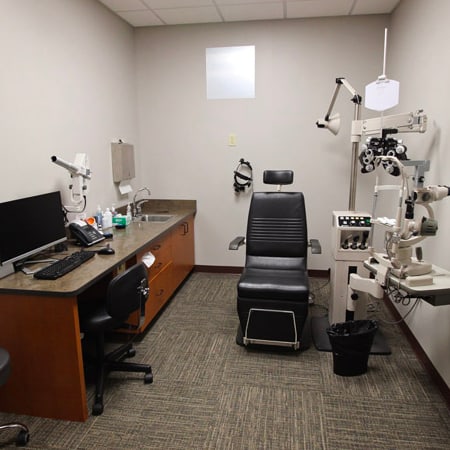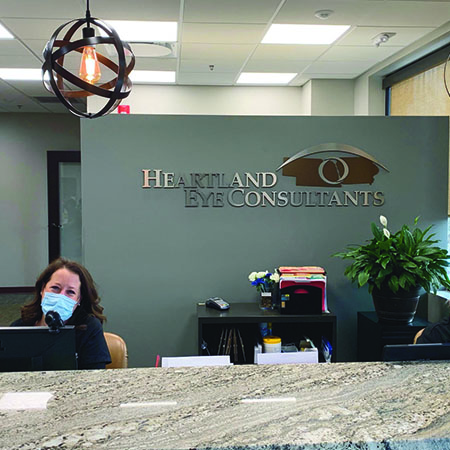You may notice that your eyes feel tired or scratchy after a long day of work or time spent outdoors. This type of discomfort is common, but when it becomes persistent, it can significantly impact your daily activities. It’s a feeling that can be hard to ignore when it keeps coming back, and finding the right dry eye therapy is key to relief.
Dry eye often feels like a gritty, scratchy, or burning sensation, but it can also cause watery eyes and blurry vision. These feelings can come from your eyes not producing enough tears or from the tears evaporating too quickly. When dry eyes cause blurry vision, it can be particularly disruptive. Understanding what causes this discomfort can help you find relief.
Know the Common Signs and Symptoms
You might notice a variety of sensations if your eyes are dry. The discomfort can range from mild to very distracting, and it often affects both eyes. The National Eye Institute provides a detailed overview of the condition, but some common signs include:
- A scratchy or gritty feeling, like sand is in your eye
- Stinging or burning sensations
- Blurred vision, especially when you read
- Redness or irritation
- Sensitivity to light
- Watery eyes, which are the body’s response to irritation
- Stringy mucus in or around your eyes
- Difficulty with night driving
What Causes That Dry, Gritty Feeling?
Many daily habits can contribute to eye discomfort. Your environment and how you use your eyes play a large role in how they feel throughout the day. Paying attention to these factors can help you understand your symptoms.
Your Posture and Your Eyes
The way you sit affects more than just your back. Poor posture, like hunching over a desk, creates tension in your neck and shoulders. This can restrict blood flow and put extra strain on your visual system.
Screen Time and Computer Use
When you focus on a screen, you tend to blink less often. Blinking is essential for keeping your eyes moist and refreshed, and prolonged screen use can lead to a condition known as computer vision syndrome. A monitor that’s too high can also cause your eyes to open wider, leading to increased dryness.
Stress and Eye Discomfort
Stress impacts your whole body, including your eyes. It can cause muscle tension around your face and jaw. This can lead to feelings of eye fatigue or discomfort.
Conditions That Feel Like Dry Eye
Sometimes, what feels like dry eye may be related to how your eyes and brain work together. These issues can produce similar symptoms of discomfort and blurriness. It’s helpful to be aware of them.
Visual Stress
Prolonged close-up work, such as reading or using a computer, can cause your visual system to work harder than it should. This extra effort can lead to headaches and fatigue. It can also create sensations that mimic dry eye.
Eye Strain
When your eyes have to work too hard to focus, they can get tired. This is known as eye strain, and understanding how long eye strain lasts can depend on its cause. It often happens after long periods of concentration and can cause redness, irritation, and difficulty focusing.

Simple Habits for Eye Comfort
You can try a few simple adjustments to your daily routine to help your eyes feel more comfortable. These habits focus on reducing visual stress. They are easy to incorporate into your day.
Practice The 20-20-20 Rule
Every 20 minutes, take a break from your screen. The 20-20-20 rule suggests you look at something at least 20 feet away for a full 20 seconds. This gives your eye muscles a chance to relax.
Adjust Your Workspace
Position your computer monitor slightly below eye level. A sloped work surface can also reduce strain on your neck, shoulders, and eyes. Check that your chair provides sufficient support to help you sit up straight.
Think About Lighting
Good lighting is important for eye comfort. Make sure your room is well-lit, but avoid placing lights where they create glare on your screen. Poor lighting can make your eyes work harder to see clearly.
How Long Does the Discomfort Last?
The duration of dry eye symptoms can vary. For some, it may be a temporary issue caused by environmental factors, like a windy day or a dry room. For others, the discomfort can be more persistent, especially if it’s linked to daily habits like extensive screen use.
Symptoms from eye strain often improve with rest and better visual habits. If the discomfort persists, it may indicate an underlying issue. Paying attention to why it feels like something is in your eye can offer useful clues for your doctor.
When to Talk with Your Eye Doctor
If you’ve tried simple adjustments and your symptoms haven’t improved, it may be time to seek a professional opinion. Persistent discomfort, blurry vision, or eye pain are signs that you should schedule an appointment with an eye care professional. You don’t have to keep struggling with these feelings.
A thorough eye exam can help figure out the source of your discomfort. Your eye doctor can evaluate your overall visual function, not just how clearly you see. We explore how your eyes focus, team up, and track objects to gain a comprehensive understanding of your eye health. Your eye comfort is important, and you deserve to understand what’s causing your symptoms. At Heartland Eye Consultants, we take the time to listen to your concerns and provide personalized care. If you’re ready to address your eye discomfort, contact us to schedule a conversation.





























